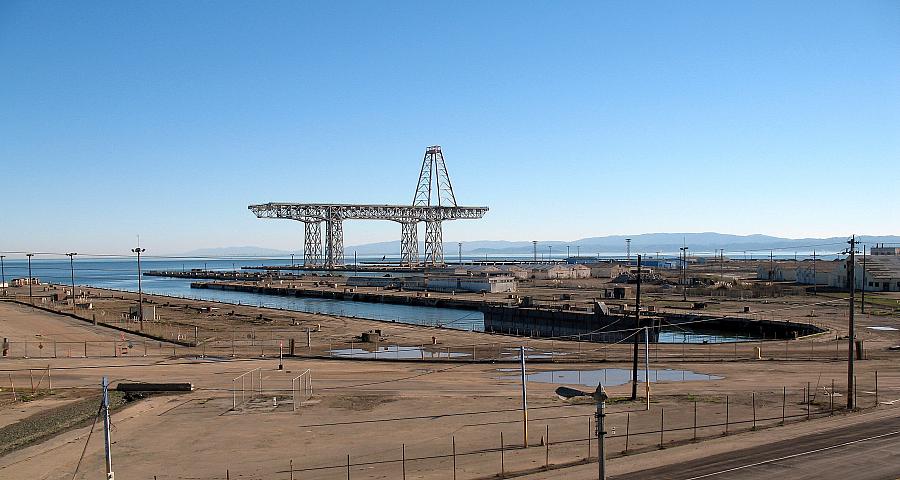The toxic legacy of San Francisco’s Hunters Point Naval Shipyards

The land making up the Hunters Point Naval Shipyards has long been eyed for housing redevelopment in San Francisco, but the toxicity of the site has thwarted the process.
San Francisco’s roughly 49 square miles is divvied up into neighborhoods that readily charm tourists, a $10 billion dollar industry in 2019. Barkers in North Beach throw in an Italian phrase to convince foot traffic about their pasta; high-pitched gaohu string music enchants visitors wandering the alleys of Chinatown; and sizzling bacon-wrapped hot dogs in the Mission lures late-night revelers spilling out of bars at closing time.
But in the southeast corner of San Francisco, nearly 900 acres of a decommissioned Naval base is being divvied up for a very different reason. It’s a Superfund clean-up site, and the parceled land has been examined, reexamined, cleaned and re-cleaned for decades, with the ultimate objective of transferring the land to San Francisco so the city can shore up its inadequate housing supply. The state is pressing San Francisco to create more affordable housing, so the pressure to transfer these parcels is intense.
Aside from the Navy, the rich history of the area includes ancient shell mounds of the Ohlone; a Chinese shrimping industry in the 19th century; and one of the nation’s largest art collectives. When the country went to war after the bombing of Pearl Harbor, thousands of Americans, including Blacks desperate to escape the Jim Crow South, flocked to the Navy’s new shipyards in San Francisco for employment. The Navy stopped running the Shipyards in 1974, wiping out the financial footing of many in the neighborhood, and left a toxic mess behind.
In June of 2022, a civil grand jury threw another wrench in the land transfer process already marred by scandal, arguing that the Navy has not taken into account climate change and sea level rise projections, which could push contaminated ground water through the capped land.
There’s a tremendous amount of data that still needs to be reviewed with climate change in mind. Although the Navy is responsible for the clean-up, their work is overseen by the EPA, the California Department of Toxic Substances Control, and the San Francisco Bay Regional Water Quality Control Board. The result has been a billion dollars spent on clean-up and a legacy of paperwork and data that the civil grand jury report described as “arcane and very difficult to understand.”
Local environmental health activists like Dr. Ahimsa Sumchai, who runs a biomonitoring clinic in the Bayview, are generating new data that needs verification, as well. The Marie Harrison Bayview Air Monitoring Network, named after environmental justice activist Marie Harrison, is collecting important air quality data.
The goal of my reporting, undertaken as a 2022 Data Fellow, will be to help discern — through rigorous, up-to-date data — whether or not the land is safe enough to transfer to the city. What makes this reporting important is the health of not just current but future residents of San Francisco is at risk if the land is transferred without a comprehensive data-driven evaluation of the potential health risks posed by the land.
On a narrative level, my goal will be to bring the reader to Bayview Hunters Point. Not just the abandoned Shipyards, but the Bayview neighborhood itself, which retains echoes of San Francisco’s famed Fillmore neighborhood, once called the “Harlem of the West.” There is an enduring irony in the fact that the grandfathers and grandmothers of some who live in the Bayview today helped build the ships that won World War II. Despite that sacrifice, their children face economic hardships and health hazards that may drive them from their homes. Arieann Harrison, daughter of the aforementioned Marie Harrison, started a nonprofit to honor her mother’s legacy whose name says it all: Can We Live?
Previous reporting on the Bayview has villainized the Navy for either their failure to complete a thorough clean-up or for their decades-long reliance on outdated data. Although the Navy shoulders plenty of blame, my reporting will try to get past the blame game and gather accurate data about what exactly should be done with this enormous site.
**

